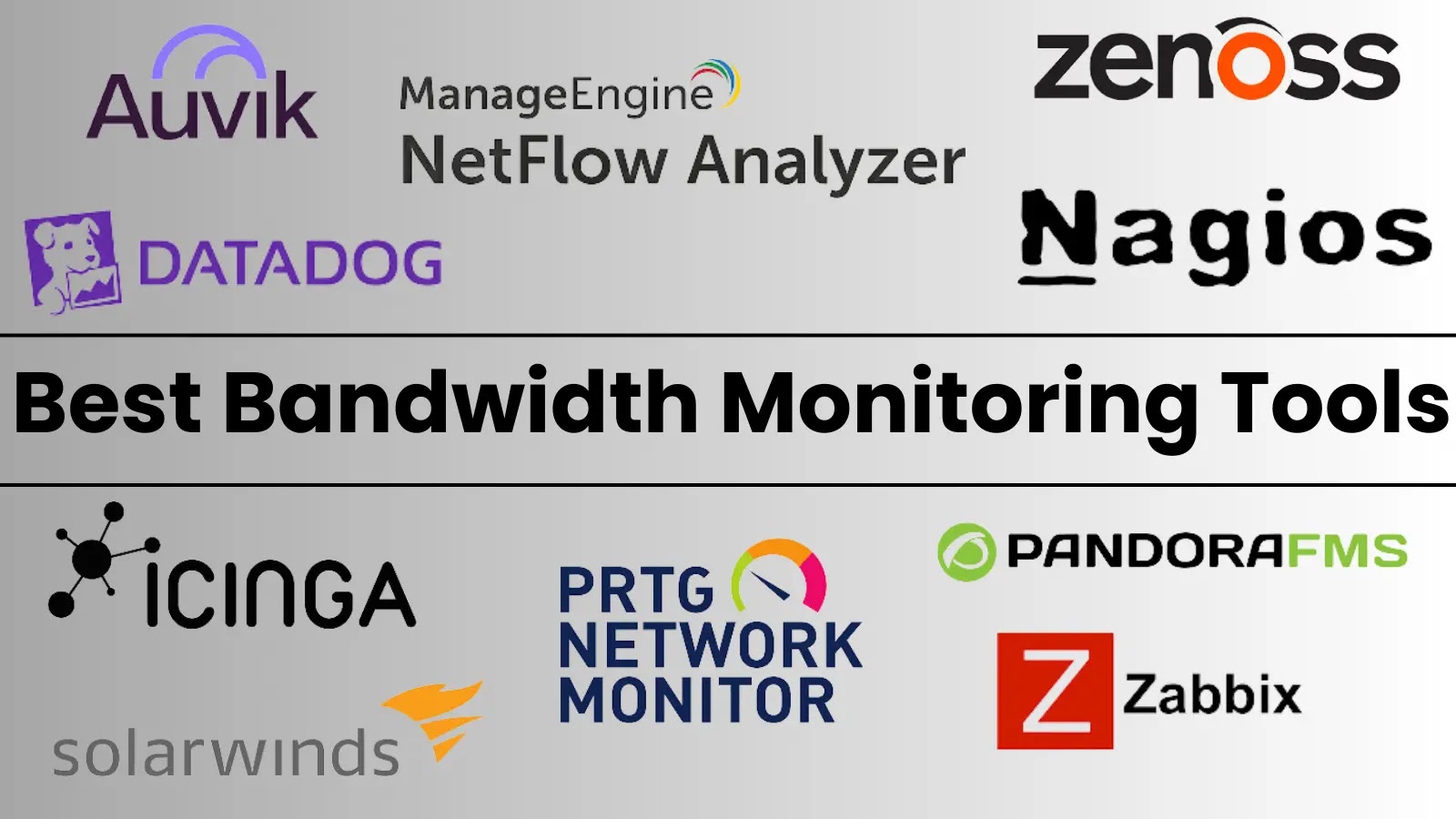
15 Best Bandwidth Monitoring Tools in 2025
In the complex landscape of modern IT infrastructure, maintaining optimal network performance is paramount. Slow applications, dropped connections, and frustrated users often point to one common culprit: unmanaged bandwidth. For IT administrators, a clear understanding of network traffic is not just helpful; it’s absolutely essential for proactive management and efficient resource allocation.
The Imperative of Bandwidth Monitoring
Bandwidth monitoring tools are not merely diagnostic utilities; they are foundational elements for robust network management. These solutions empower IT professionals to observe, analyze, and optimize network traffic in real-time. By providing granular insights into data consumption, application usage, and potential bottlenecks, they enable organizations to prevent performance degradation before it impacts end-users.
Efficient bandwidth utilization translates directly into improved application responsiveness, reduced operational costs, and enhanced user satisfaction. Without these tools, identifying the root cause of network slowdowns becomes a time-consuming, reactive process, often leading to significant downtime and productivity loss.
How Bandwidth Monitoring Tools Function
At their core, bandwidth monitoring tools collect data from various points across a network. This typically involves leveraging network protocols and technologies such as:
- SNMP (Simple Network Management Protocol): Widely used for gathering statistics from network devices like routers, switches, and servers.
- NetFlow/IPFIX/sFlow: Protocols that provide detailed information about IP traffic flows, including source/destination IP addresses, ports, protocols, and volume.
- Packet Sniffing: Capturing and analyzing individual data packets for deep inspection, useful for identifying specific application traffic or malicious activity.
Once collected, this raw data is processed and presented through intuitive dashboards and reports. This visualization allows administrators to identify trends, pinpoint abnormal usage patterns, and drill down into specific traffic types or user activity. Tools often offer features like historical data retention, customizable alerts, and integration with other network management systems.
Key Benefits of Utilizing Bandwidth Monitoring
Implementing effective bandwidth monitoring yields a multitude of advantages for any organization:
- Performance Optimization: Identify and resolve network bottlenecks, ensuring applications run smoothly and efficiently.
- Proactive Troubleshooting: Detect anomalies or impending issues before they escalate into major problems, minimizing downtime.
- Capacity Planning: Gain insights into current and future bandwidth requirements, aiding in informed infrastructure upgrades.
- Security and Compliance: Monitor for suspicious traffic patterns, unauthorized access, and potential data exfiltration. While not a primary security tool, it can assist in identifying unusual activity that might warrant further investigation.
- Cost Management: Optimize bandwidth allocation, potentially reducing expensive over-provisioning or identifying where current usage might justify a higher-tier service.
- Application Performance Improvement: Pinpoint which applications consume the most bandwidth, allowing for prioritization or optimization.
Remediation Actions for Bandwidth Issues
Once a bandwidth monitoring tool flags an issue, specific actions can be taken to mitigate the problem. The approach depends on the identified root cause:
- Identify Top Talkers: Determine which users, applications, or devices are consuming the most bandwidth.
- Traffic Shaping/QoS (Quality of Service): Prioritize critical business applications (e.g., VoIP, video conferencing) over less critical traffic (e.g., large file transfers, recreational browsing).
- Bandwidth Limits: Implement policies to cap the bandwidth available to specific users or applications.
- Infrastructure Upgrade: If consistent bottlenecks persist despite optimization efforts, it may indicate a need for higher capacity network equipment or internet service provider (ISP) upgrades.
- Application Optimization: Investigate whether certain applications are inefficiently designed or configured, leading to excessive bandwidth use.
- Malware/Vulnerability Check: Unexpected spikes in outbound traffic could signal a compromised system (e.g., botnet activity). Conduct thorough scanning and apply relevant patches. For example, sudden large outbound traffic linked to a web server might point to an exploitation of a vulnerability, such as one associated with CVE-2023-38545, related to a Curl vulnerability, or an unexpected database exfiltration.
While not a dedicated vulnerability remediation step, consistent monitoring provides the data necessary to inform targeted security investigations when performance anomalies suggest compromise.
Tools for Detecting and Managing Bandwidth
A variety of robust tools exist to help manage and monitor network bandwidth. While specific tools address a range of needs, a general category of network performance monitoring (NPM) tools often includes robust bandwidth analysis capabilities.
| Tool Name | Purpose | Link |
|---|---|---|
| SolarWinds Network Performance Monitor | Comprehensive network performance and bandwidth monitoring. | SolarWinds NPM |
| ManageEngine OpManager | Unified network management, includes bandwidth analysis. | ManageEngine OpManager |
| PRTG Network Monitor | All-in-one monitoring solution with deep bandwidth insights. | PRTG Network Monitor |
| Datadog Network Performance Monitoring | Cloud-based network and application performance monitoring. | Datadog NPM |
| Zabbix | Open-source enterprise-level network monitoring solution. | Zabbix |
Looking Ahead to 2025: Evolution of Bandwidth Monitoring
As networks become more distributed, complex, and reliant on cloud services, bandwidth monitoring tools are evolving. Expect increased integration with AI/ML for predictive analytics, anomaly detection, and automated remediation suggestions. Enhanced support for software-defined networking (SDN) and cloud-native environments will be crucial. Furthermore, the convergence of network performance monitoring and security analytics will continue, providing a more holistic view of network health and potential threats.
Conclusion
Effective bandwidth monitoring is not a luxury; it is a fundamental requirement for maintaining healthy, high-performing networks. By providing granular visibility into network traffic, these tools empower IT professionals to proactively identify and resolve performance issues, optimize resource utilization, enhance security posture, and support strategic capacity planning. Investing in robust bandwidth monitoring solutions is a critical step towards ensuring operational efficiency and a seamless user experience in any modern IT environment.





